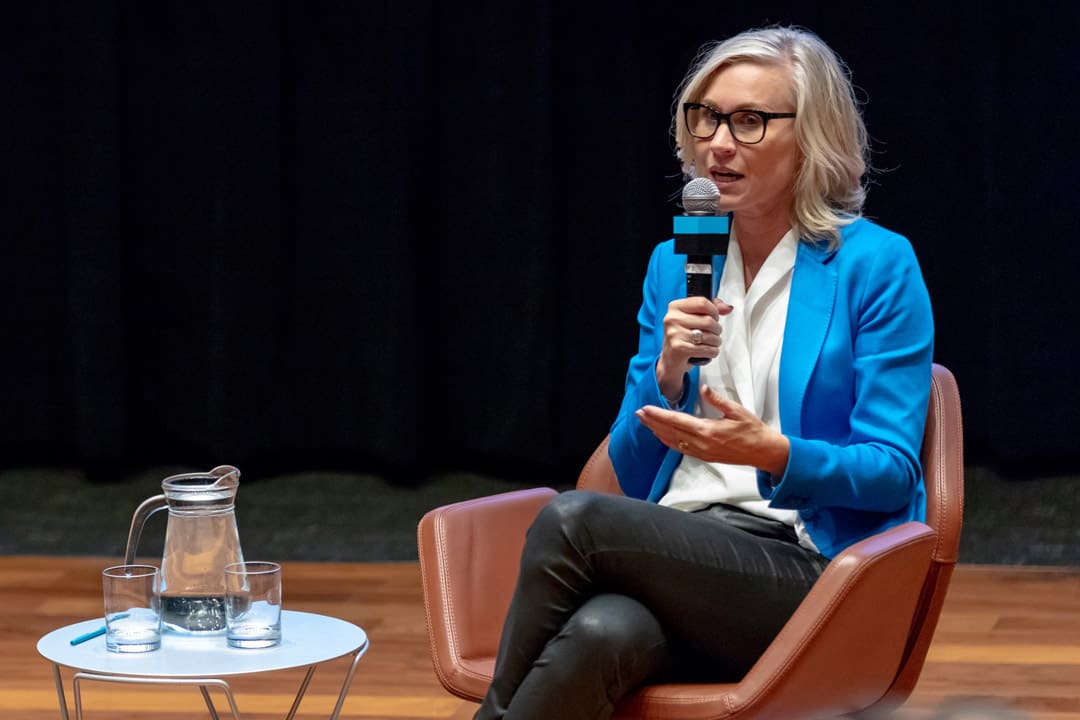Jennifer Keesmaat’s last-minute entry into the mayoral race drew her a lot of attention in a short campaign season. Since joining the race, she has steadily remained in second place in the polls. Keesmaat is a York University and University of Western Ontario alum, and was Toronto’s Chief Planner from 2012–2017. Keesmaat’s policy plan consists of making Toronto greener and more sustainable, transforming Yonge Street, and focusing on transit planning.
Environmental sustainability
Keesmaat’s environmental plan aims to create 100 kilometres of green streets each year mainly by planting gardens and trees on all streets that need to be resurfaced. She also plans on making more environmentally conscious infrastructure decisions, going off of what the Queens Quay Sustainable Sidewalk Program and the Rain Garden Parkette have aimed to accomplish. She is also dedicated to creating a stormwater management charge.
“Toronto will suffer more and more from the kinds of intense storms and flooding that climate change brings,” Keesmaat’s website said on her environmental policies. “We can’t control the weather, but we can make different decisions about how we build out our infrastructure to minimize flooding and create a healthier, more liveable city for everyone.”
Safety
Keesmaat plans to double the amount of mental health workers that work with the police force. She also aims to expand the neighbourhood policing program to 140 neighbourhoods, with the hopes of bringing 911 response times up to the national average.
If elected, she would request the provincial and federal governments to ban the sale of handguns and handgun ammunition within Toronto’s borders.
Keesmaat plans to make the Vision Zero approach a requirement to all new development projects. Vision Zero is a municipal plan to make Toronto streets safer for drivers, passengers, pedestrians, and cyclists.
Under Vision Zero, Keesmaat would support reducing the speed limit to 30 kilometres per hour on all residential roads, as well as redesigning dangerous intersections and school zones within two years.
Taxes
Like Tory, Keesmaat promised that she would cap most residential property taxes at inflation. She is making an exception, however, to tax luxury homeowners with homes worth over $4 million at an additional 0.4 per cent per year.
The revenue from this tax would go back into an affordable home ownership program.
Keesmaat also said that she would push to see more revenue from the provincial and federal governments to go back into the city.
Infrastructure and transit
To confront what she sees as transit planning chaos, Keesmaat plans to make up for lost time on a proposed relief line, which is a plan to build a rapid transit system to combat the crowded subways on Line 1.
Stations have already been selected, and according to Keesmaat it would take the city about one to two years to acquire property. During this time, utility relocations could commence, which she estimates will be about a six-month process.
“Everyone who rides the subway to work or school every day knows that we’ve reached a crisis point in this city. You wait on a dangerously overcrowded platform as packed train after packed train passes you by. And when you can finally get on, you’re crushed. Toronto commuters need relief, and they need it now,” said Keesmaat.
Her Yonge Street plan looks to “transform Yonge St. from Sheppard to Finch into a vibrant and unique urban destination in the heart of North York.” Keesmaat wants to make Yonge Street a place where residents can walk, drive, bike, and work. She also aims to address the amount of collisions, and instances of bikers and pedestrians being hit by cars.
Election day is on October 22, and advance voting ran October 10–14.


